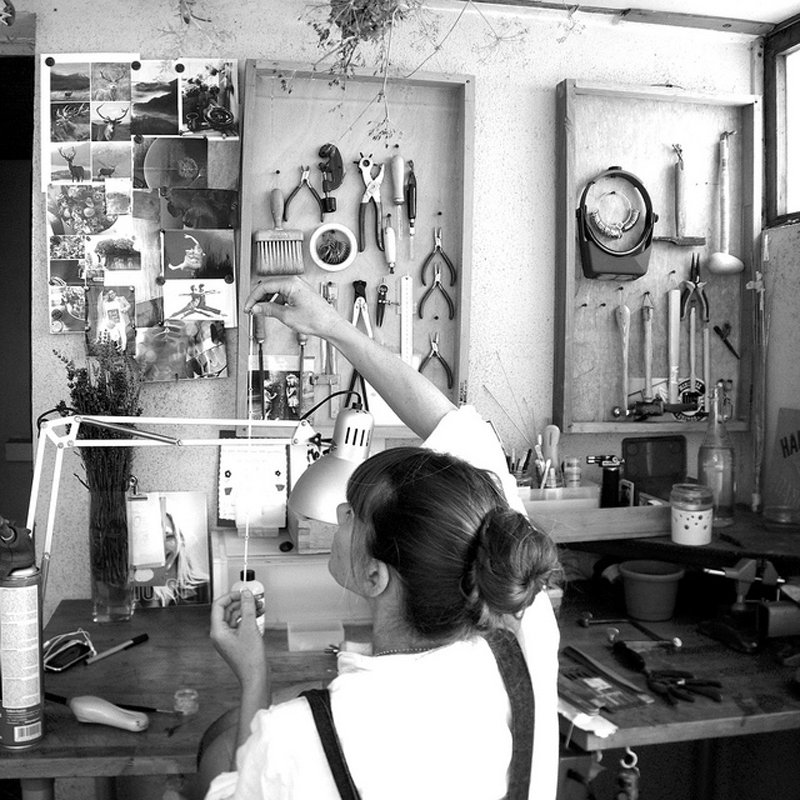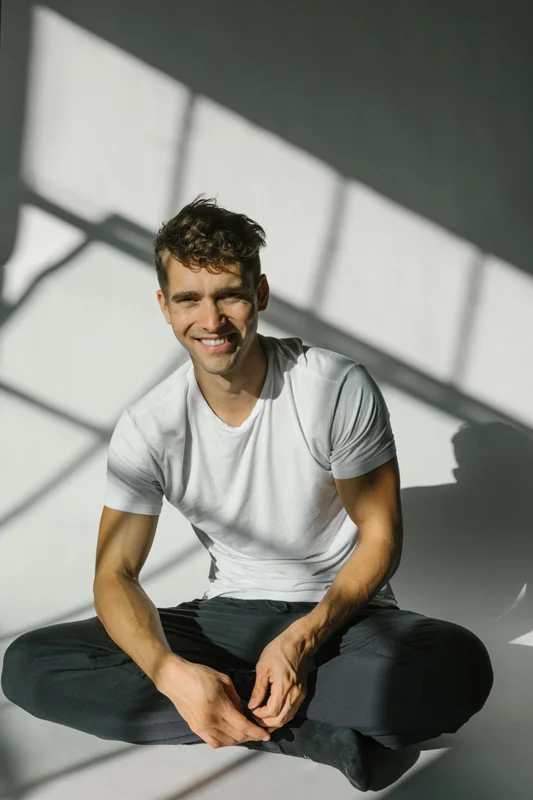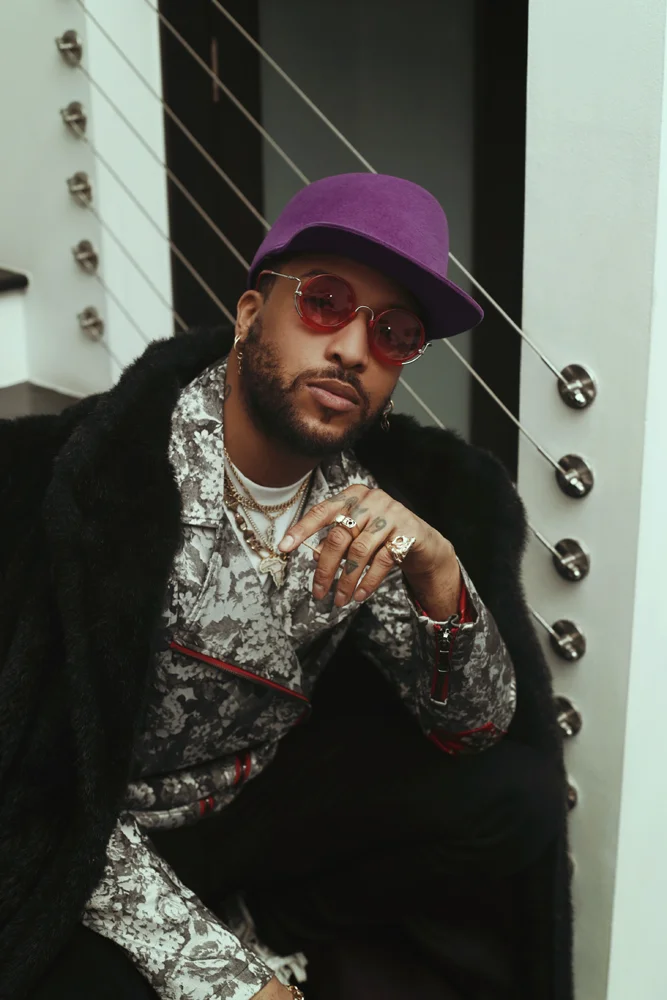
Khanna, Nikhil Thampi, Khanijo and Aartivijay Gupta.
INTERVIEW WITH PROFESSIONAL DESIGNER AND ILLUSTRATOR SAIM GHANI

Saim Ghani is a professional fashion designer and illustrator based in Calcutta, India. He is currently a senior designer at Anamika Khanna, one of the leading fashion designers of India. Graduated from the National Institute of Fashion Technology, Saim’s design often inspired by shapes, forms, prints and colours. His style also shows through his illustrations, which always involved fashion as well as Indian mythology references to create god hybrids. His illustrative art also speaks of world issues, which makes them extremely interesting. HUF Magazine interviewed him to find out more about his story.
Where do you live and work? What’s it like living and working there?
Born and brought up in Calcutta (Kolkata), a city driven by its colonial culture, art, and warmth, combating a constant battle between the past and present. This city has been my home for 26 years and counting. I work at Anamika Khanna, a leading couture house in India. A city at its own pace, comforting and liberating to extract and immerse, I am blessed with constant love shared by the folks and peers, adding value to my resistance.
You are currently a senior designer at Anamika Khanna. Can you tell us how you got this job? What does the role involve, and what is it like working as a senior designer?
Anamika Khanna happened to me like a dream. Waking up to a call from my best friend – asking me to rush for the interview during college placements, the next thing I knew that my career had begun. From brainstorming ideas for a new collection to executing a client’s dream attires. Amidst the adrenaline rush of prepping for a show or a presentation deadline. The position comes with a lot of responsibilities, keeping up with the legacy and fineness! Embedding the brand’s DNA and balancing with my inner creative outbursts. My passion is aligned with art and fashion, and what we make here is a relevant timeless expression which, for us, is beyond clothes. Working with her is extremely stimulating and inspiring, mastering unimaginable ideas to reality with her insights is something I look up to every day.



You graduated in Fashion Design at the National Institute of Fashion Technology, Kolkata. Was it useful in your career? Would you recommend others to study the same course?
NIFT being the premier design institute of the country, was a challenging phase where I pursued Bachelors in Fashion Design with endless working hours and practicing the details of fabric to fashion, compiled to a final design collection. A true understanding of oneself – guided with lifetime mentors, the institution prepares you for the worst, and everything seems easier thereafter. The course makes you cohesive and brings out the best in you. I would always strongly recommend studying here because it holds
credentials for wherever I am today.
How would you describe your style of fashion design?
Fashion, for me, holds a very intimate value, an avant-garde approach where my vivid aesthetics coincide with functionality and art. My design process involves reminiscing from scarring incidents, transmuting in the forms of prints, and surface textures. It is ruled by the darkness, clashing silhouettes, and blurry elements. I truly swear by ‘artisanal’ and ‘made in India’ and ethos I wish to take forward as my work principles and embrace the same for a brand I want to own one day.


You also create illustrations. Were illustrations something you were interested from the beginning, or was it something you developed into while studying fashion design?
At about 6-7 years of age, I would purchase sketchbooks, creating Indian ensembles inspired by the folks and peer environments, to create bridal and everyday occasion wear. Colour choices, design alterations, customisations, etc. were played to abundance – imagining my family as clientele.
Television was a primary influencing tool in those days. Illustrating that perfect fashion croquis was always a prime concern. Abstractness drove me, and the drawing omissions channelised into my strengths and distinct style. Leading to a personal canvas shift, digital age to the rescue – visual research incorporations, pictorial elements, and mood additions to pictures I saved off my favourite designer pages or magazines, to create what is history now.

What was the very first illustration that you did, and what is your most recent? What would you have done differently now if you could go back and redo your first illustration?

My very first illustrations were that of my graduation design collection titled ‘Amputat-Me.’ It represented amputation by choice – empowerment in self-inflicted imperfections. It was characterised by an amalgamation of X-rays, body diagram, and plastic – as foundation components. Set fantasy environment explorations currently play a pivotal role in my works. If I could rewind, mythology references would fulfil the fantasy quotient, and a more significant subject radius put out at stake.
My most recent illustration is called Covid Dulha, ‘ dulha’ means ‘groom’ in Hindi. It is visually communicating an Indian groom set in an unusual time like these, along with his changing essentials. The multiple faces exposit how we as a country are shying away from the seriousness of the pandemic – taking precautions only isn’t enough to save the world!
How long does it take for you to create an illustration on an average? And what tools do you use?
To create a composition I am proud of, it takes approximately anywhere between 3 to 6 hours depending on the subject complexity and intricateness, incited by the creative rush levels. The software I swear by is Adobe Photoshop©, having self-learnt confidently tackling my demands and best deliverable outputs.
Your illustrative art speaks about world issues. Obviously, COVID-19 is a major world issue right now. However, there are times when multiple world issues are happening at the same time. How do you choose which world issue to create your art?
COVID-19 exploded like a wave resulting in a complete pause to humanity and its operations. The quarantine period facilitated my creative thoughts amidst the usual life chaos. To choose which world issue to create my art, I would gather influences from modern culture and environment, nearsighted subjects relevant to personal existence, and future presciences command my art. Speaking about visibility, trending topics captivate larger audiences and gain relevance to ongoing webinars and art cultures.

Can you describe your creative process when creating a piece of art?
Post appropriate visual selection, vigorous brainstorming, and associate visual elements fuel my first strokes. All researched elements are then directed to the subject to create a storyline for further execution. Colour outbursts, multiple body usages, and current trends are DNA mandates. Most artworks reflect my current mood and ongoing thoughts.
Your illustrations often involve fashion. How do you decide which designer’s work you want to use? And have you ever created illustrations using your own fashion design?

Fashion resurrects me. I look to more editorial content, models with creative individualistic DNAs that add to the larger than life fashion on them. Fanboy for designers who constantly break industry set boundaries and create futuristic ahead of times campaigns – all add to my art style. Greater content reach and coveted visible platforms are an important key too. My first illustration was one of my own design collection ensembles that I spoke about earlier. It added to my creative vision and led to confident deliverables encouraging me to venture into the field space.
Your illustrations also take Indian mythology references to create god hybrids. How did that come about?
My upbringing familiarised me with various cultural diversities, being born into a Bengali society. During the famous Durga Puja festivities, laying under the idol’s abode, those initial giant glimpses instantly captured my mind. India celebrates the female form in numerous powerful aspects – jewellery clad idols, sacred weapons, associate animals, imaginary body manifestations – all inspire my art. The deity is a woman of today battling demons and overcoming all odd plots to emerge victoriously. It is fascinating to see how we follow our age-old traditions so religiously and recreate textual manuscripts in the present.


Which is your favourite illustration that you’ve done so far?
The one that I did in collaboration with an Indian fashion blogger is one of my key favourites. ‘Work From Home And Quarantine’ was the suggested idea, how human beings grasp on to the planet, struggling to sustain as diversity in current times.

Do you take commission work?
Yes, I do, but I haven’t taken any commissioned yet – but looking forward to a few fun opportunities knocking along in due course.
What challenges do you face as a creative individual in India?
India being a democratic superpower, people are very opinionated and traditionally orthodox in views and culture. Homophobia and acceptance are prime struggles. Individuality may often be altered to meet social norms and ‘fit in’ to lead a certain predetermined life. Creative jobs are neglected for their underrated importance and often subject to false made up notions. Vouching for more opportunity and exposure is a yearning.
Individual work can be the subject of criticism, have you ever felt criticised, and how did you deal with it?
A fair share of first criticisms came from a work colleague – my use of the ‘trishool’ (a sacred Indian god weapon) was ridiculed to my addiction, to which I took to my creative stride and led to explorations of newer subjects and moods. I channelise negative energies as supplements to creative thinking and ideations – moreover, proving my versatility to myself.






What would be your ultimate goal as a fashion designer/ illustrator?
The ultimate goal is to create an archive of some substantial vocal works and vouch for the right showcasing platforms, working on a set theme eventually to gift myself an art exhibit on my next birthday. For the love of fashion, I intend to launch a brand of my own, correlating my artworks into tangible couture.
Finally, where can our readers find your work?
My Instagram handle @saim.gh is where I exhibit out all my work while intending to document all over again on Behance, a creative showcasing platform for a better view of my portfolio in the future. To network, I resort to Facebook too, under the name – Saim Ghani-Syed.











